Solar, Monitors, and Chatbots: The Best of the CES Show Floor
The interestingness is hiding between the booths
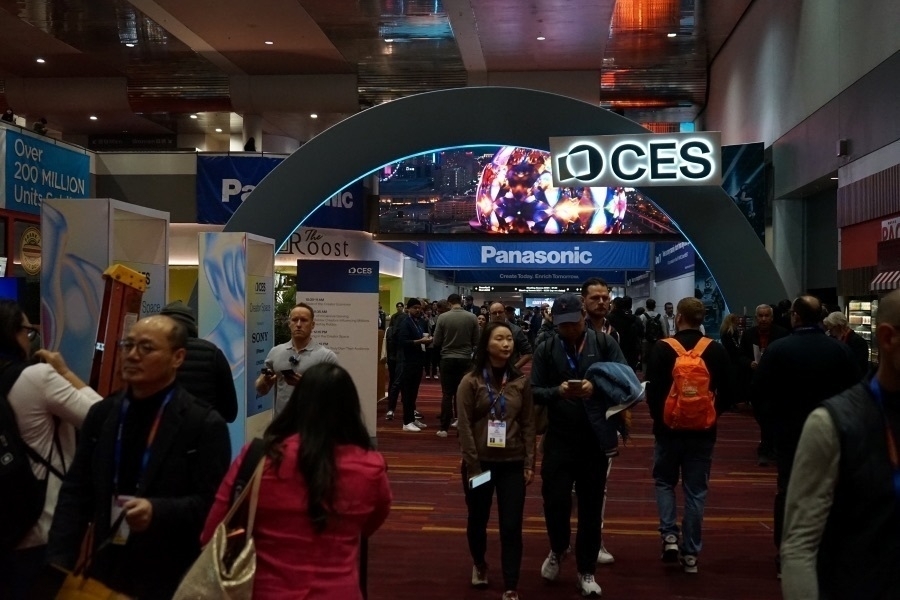 The show floor of CES 2025. Image: Media Play News.
The show floor of CES 2025. Image: Media Play News.
On Tuesday, doors to the show floor opened at the Consumer Electronics Show in Las Vegas, letting journalists and technology vendors alike explore the innovations of companies small and large. Over Tuesday and Wednesday, I tried to find as many hidden gems as I could, and I have thoughts about them all — everything from solar umbrellas to fancy monitors to new prototype electric vehicles. While Monday, as I wrote earlier, was filled with boring monotony, I enjoyed learning about the small gadgets scattered throughout the massive Las Vegas Convention Center. While many of them may never go on sale, that is mostly the point of CES — spontaneity, concepts, and intrigue.
Here are some of my favorite gadgets from the show floor over my last two days covering the conference.
Razer’s Project Arielle Gaming Chair
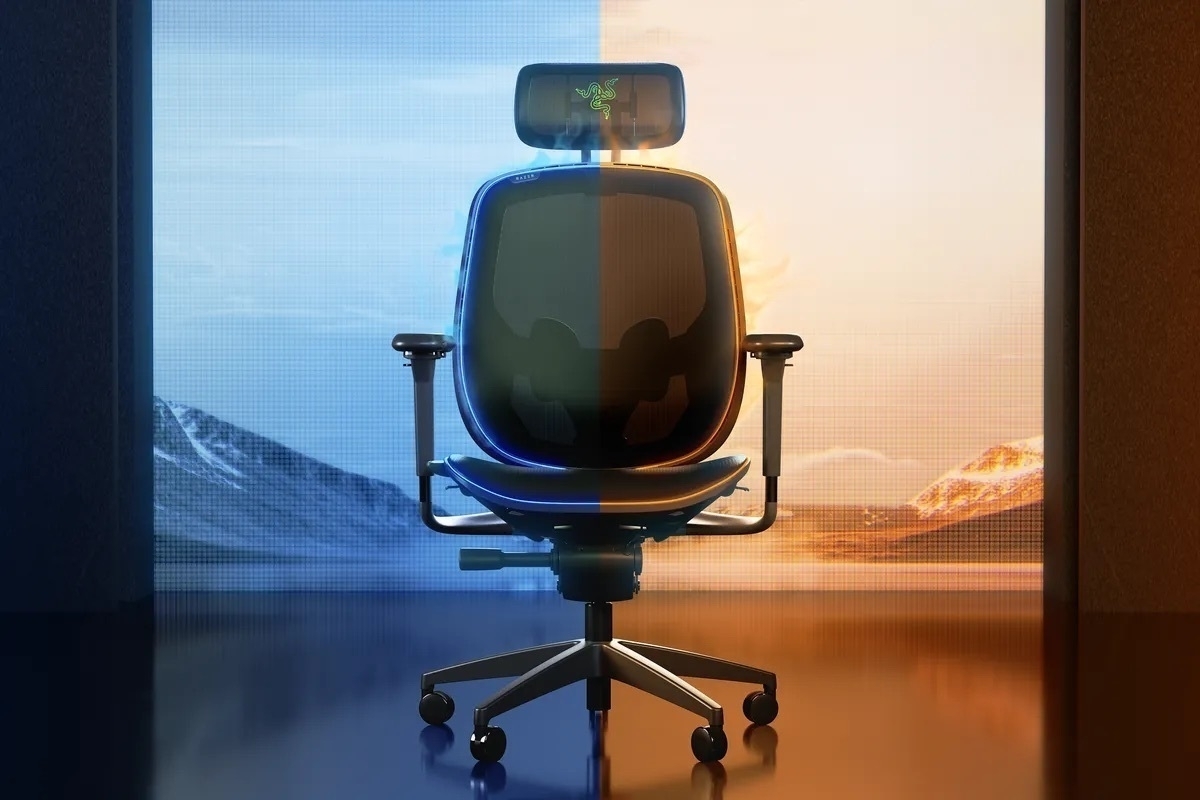 Image: Razer.
Image: Razer.
Razer on Tuesday showcased its latest gaming-focused prototype: a temperature-controlled chair. Razer is known for whacky, interesting concepts, such as the modular desk it unveiled a few conferences ago, but its latest is a product I didn’t know I needed in my life. Project Arielle is a standard-issue mesh gaming chair — specifically, Razer’s Fujin Pro — equipped with a heating and cooling fan system placed at the rear, near the spine. The fan pumps either hot or cool air through tubes that travel through the seat cushion and terminate at holes in the cushion, controlling the seat’s temperature.
The concept has multiple fan speeds and, in typical Razer fashion, is adorned with colorful LED lights. The prototype functions similarly to perforated car seats found in luxury vehicles, such as early Tesla Model S and X models, but connects to a wall outlet for power; it does not have a battery, meaning that if the cable is disconnected, the temperature control will no longer function.
I think the idea is quite humorous, but it does have some real-life applications in very warm or cold climates. It’s less of a gaming product as much as it is a luxurious, over-engineered seating apparatus. Because of how over-engineered the product is and how difficult it ought to be to manufacture reliably, chances are it will never see the light of day and become available for purchase. But concepts like these make CES exciting and interesting to cover.
GeForce Now Support Coming to Apple Vision Pro
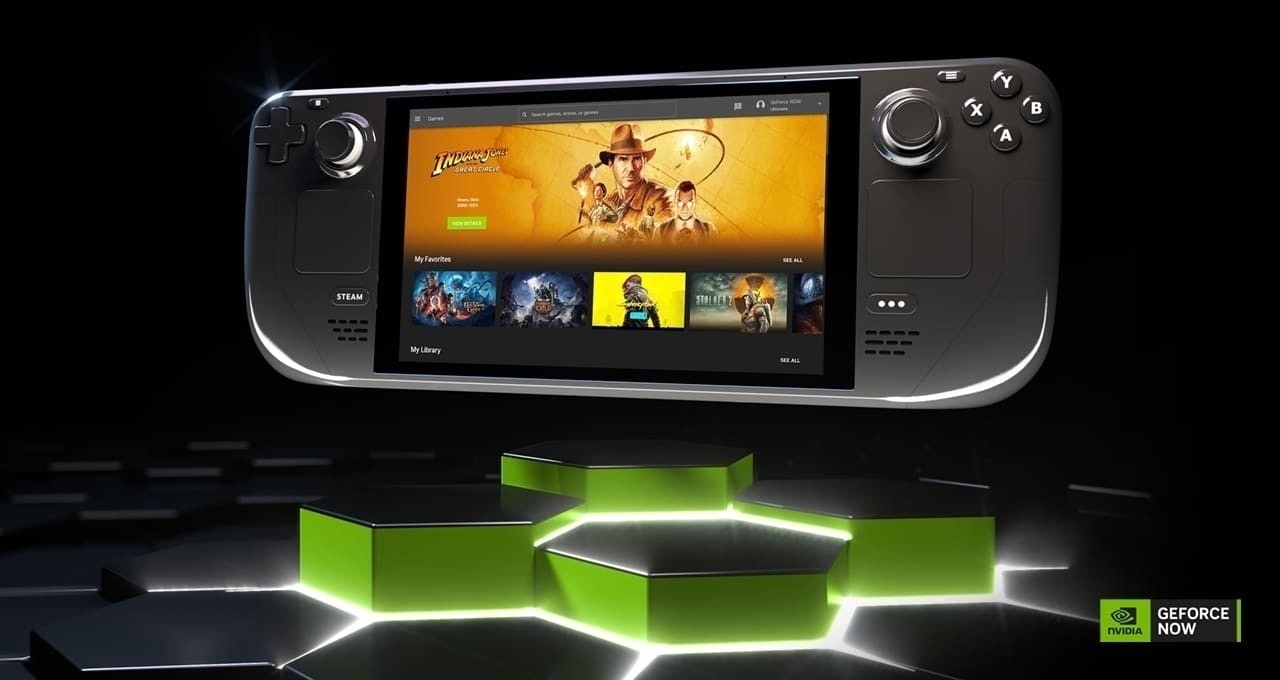 Image: Nvidia.
Image: Nvidia.
Nvidia, after its jam-packed keynote on Monday night, announced in a press release that its GeForce Now game streaming platform would begin supporting Apple Vision Pro through Safari. The company said the website would begin working when an update comes “later this month,” but it is unclear how it will function since GeForce Now runs in a progressive web app, which Apple doesn’t support on visionOS. I assume the Apple Vision Pro-specific version of the website omits the PWA step, which would require some form of collaboration with Apple to ensure everything works alright.
As I have written many times before, Nvidia and Apple have a strained relationship after the 2006 MacBook Pro’s failed graphics processors. But it seems like the two companies are getting along better now since Nvidia now heavily features Apple Vision Pro in its keynotes and works with Apple on enterprise features for visionOS. I’m glad to see this progression and hope it continues, as much of the groundbreaking technology best experienced on an Apple Vision Pro is created using Nvidia processors. Still, though, it’s a shame there isn’t a visionOS-native GeForce Now app that would alleviate the pain of web apps. Apple’s new App Store rules permit game streaming services to do business on the App Store, so it isn’t a bureaucratic issue on Apple’s side that prevents a native app.
Technics’ Magnetic Fluid Drivers
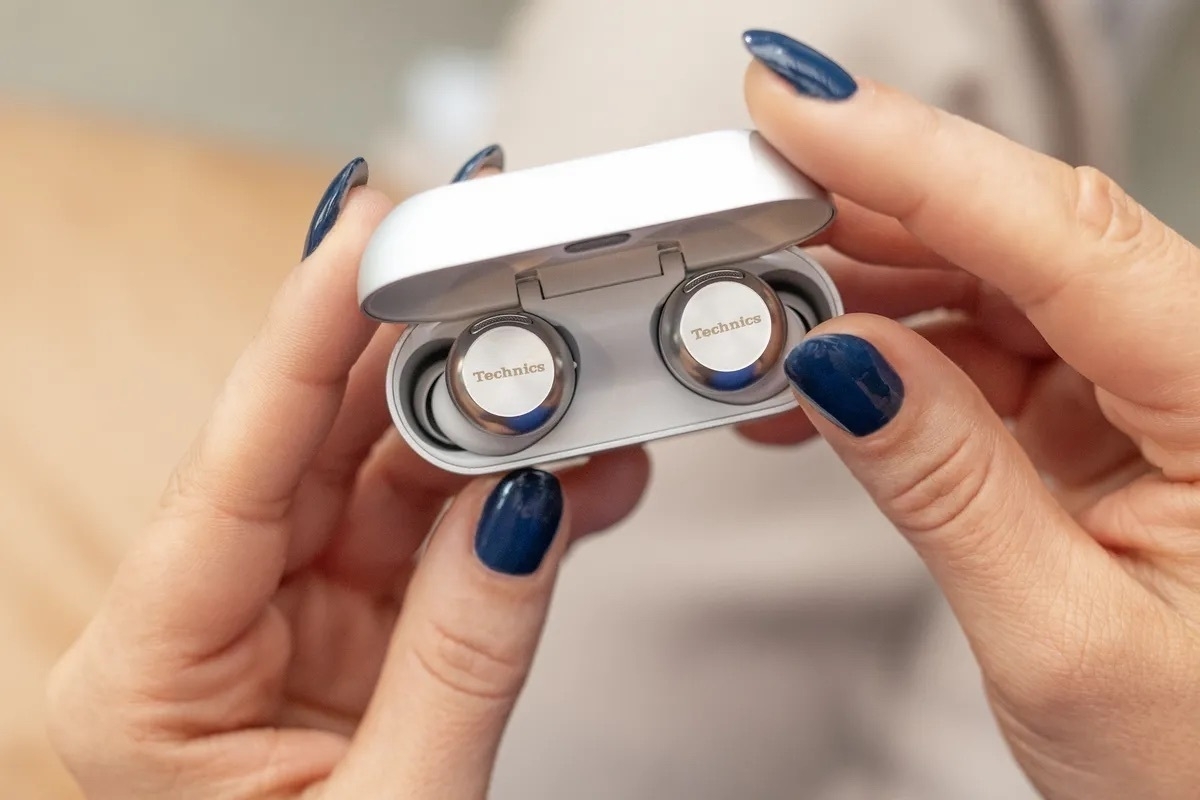 Image: Panasonic.
Image: Panasonic.
Technics, Panasonic’s audio brand, announced on Tuesday a new version of its wireless earbuds with an interesting twist: drivers with an oil-like fluid inside between the driver itself and voice coil to improve bass and limit distortion. According to the company, the fluid has magnetic particles that create an “ultra-low binaural frequency,” producing bass without distortion.
This is the kind of nerdery that catches my eye at CES: Most earbuds with small drivers typically have to prioritize volume over fidelity to compensate for the minuscule apparatus that makes the noise. As volume increases, the driver reaches its capacity — the maximum or minimum frequency it can produce — quicker. The magnetic fluid drivers aim to broaden this threshold to 3 hertz from the typical 20 hertz at its lowest, therefore producing better bass with low distortion at even high volume levels.
It’s only a matter of time before reviewers evaluate Technics’ claims — the earbuds go on sale this week for $300, $50 less than Apple’s AirPods Pro, the gold standard for truly wireless earbuds. They support Google’s Fast Pair protocol for auto-switching and easy pairing, à la AirPods, have voice boost features like Voice Focus AI to improve call quality, and customize active noise-cancellation for each ear. But these features are standard for flagship earbuds — it’s the driver fluid that makes them compelling.
Movano’s Health-Focused AI Chatbot
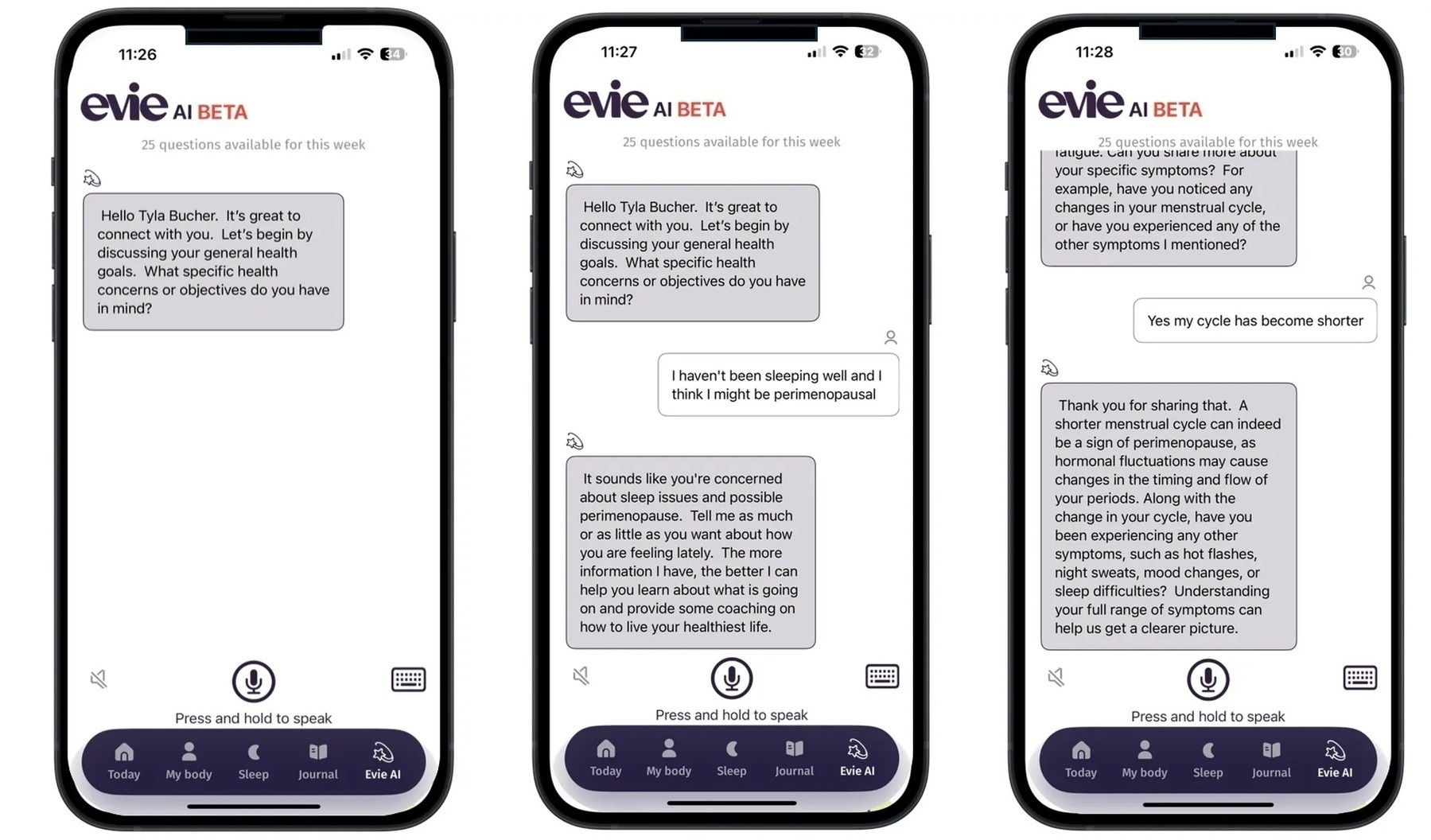 Image: Movano.
Image: Movano.
Movano, the little-known smart ring maker, announced on Tuesday a new artificial intelligence chatbot trained specifically on medical journals to provide correct, appropriate answers to medical questions. Movano claims the chatbot, EvieAI, is only trained on 100,000 peer-reviewed journals written by medical professionals and cross-checks information with accredited medical institutions like Mayo Clinic before producing a response. The company says the chatbot answers medical queries with an astonishing 99 percent accuracy, but it did not give a demonstration to members of the press.
My first instinct upon reading Movano’s press release was that WebMD, the easy-to-understand medical answers website, has finally met its first real AI competition. I still believe that to be the case, but chances are many people are more likely to trust a website with a byline over an AI-generated answer. And all it takes is one flub for EvieAI to be entirely wiped off the market and for Movano to never be trusted with AI again because the stakes are so high in medicine. I can see the tool being helpful for summaries and those “Click for Help!” chat pop-ups on some medical websites, but I still don’t think it should be trusted.
I do think AI chatbots will eventually advance to the point of reliability, but the lack of trustworthiness isn’t due to a shortage of reliable information on the internet — it’s because chatbots don’t know what they’re saying. This is an inherent limitation of large language models, and the only way to solve it is by building a helper bot that fact-checks the main language model. Even ChatGPT isn’t that sophisticated yet, so I doubt EvieAI is. Fine-tuning the scope of available training data does give the chatbot less information to make mistakes with, but ultimately, all the model knows how to do is break down words into tokens, do some pattern matching, and convert the tokens back to prose again. Narrowing the total amount of tokens reduces the likelihood for bad tokens to be generated, but it’s still a black box.
Honda Zero
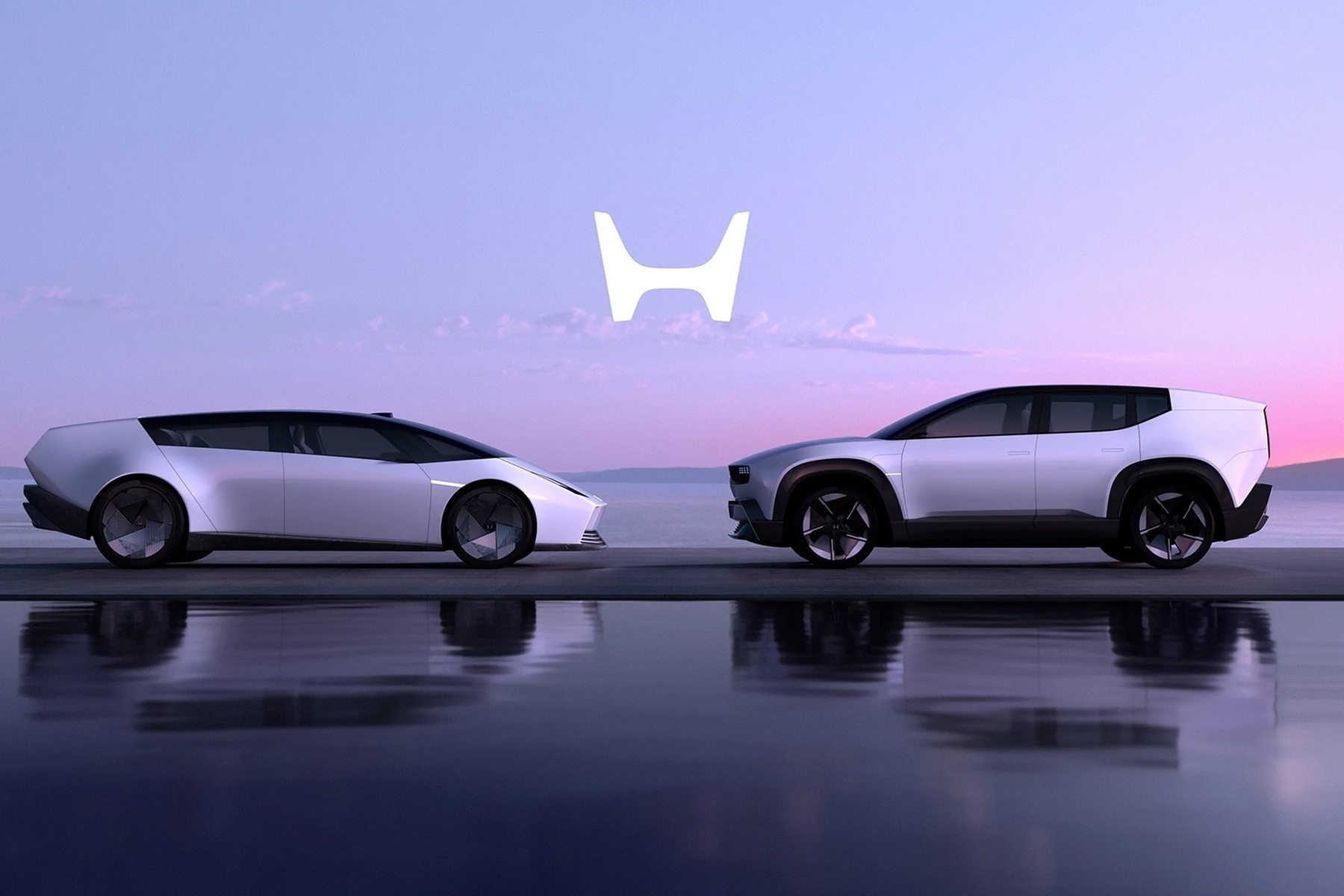 Image: Honda.
Image: Honda.
Honda on Tuesday announced two more concept vehicles to join its Honda Zero lineup of fully electric autonomous cars, first unveiled last year at CES. The two models follow in the footsteps of last year’s concepts, except Honda is more bullish on selling them, with the company stating it will begin production of the two vehicles “by 2026.” (It did not offer a concrete release timeline.)
Honda’s two new models, the Honda 0 SUV and Honda 0 Saloon, feature an unusual, strange, Cybertruck-esque design with boxy edges, flushed door handles, and no side mirrors. The Honda 0 Saloon almost is reminiscent of a Lamborghini Aventador, with a sloping hood, but appears like it’s straight from the future. Neither vehicle looks street legal, and no other specifications were provided about them or their predecessors from last year.
Honda, however, did provide some details about the cars’ operating system, which it calls Asimo OS, named after the company’s 2000s-era humanoid robot. Honda was vague about details but said Asimo will allow for personalization, Level 3 automated driving, and an AI assistant that learns from each driver’s driving habits. Honda plans to achieve Level 3 autonomy — which allows a driver to take their hands and feet off the wheel and pedals — by partnering with Helm AI as well as investing more in its own AI development to teach the system how to drive in a large variety of conditions. The company said the Level 3 driving would come to all Honda Zero models at an “affordable cost.”
I never trust this vague vaporware at CES because more often than not, it never ships. Neither of the vehicles — not the ones announced a year ago, nor the ones from this year — looks ready for a drive, and Honda gave no details on what it would do next to develop the line further. As I wrote on Monday, CES is an elaborate creative writing exercise for the world’s tech marketing executives, and Honda Zero is a shining example of that ethos.
BMW’s New AR-Focused iDrive
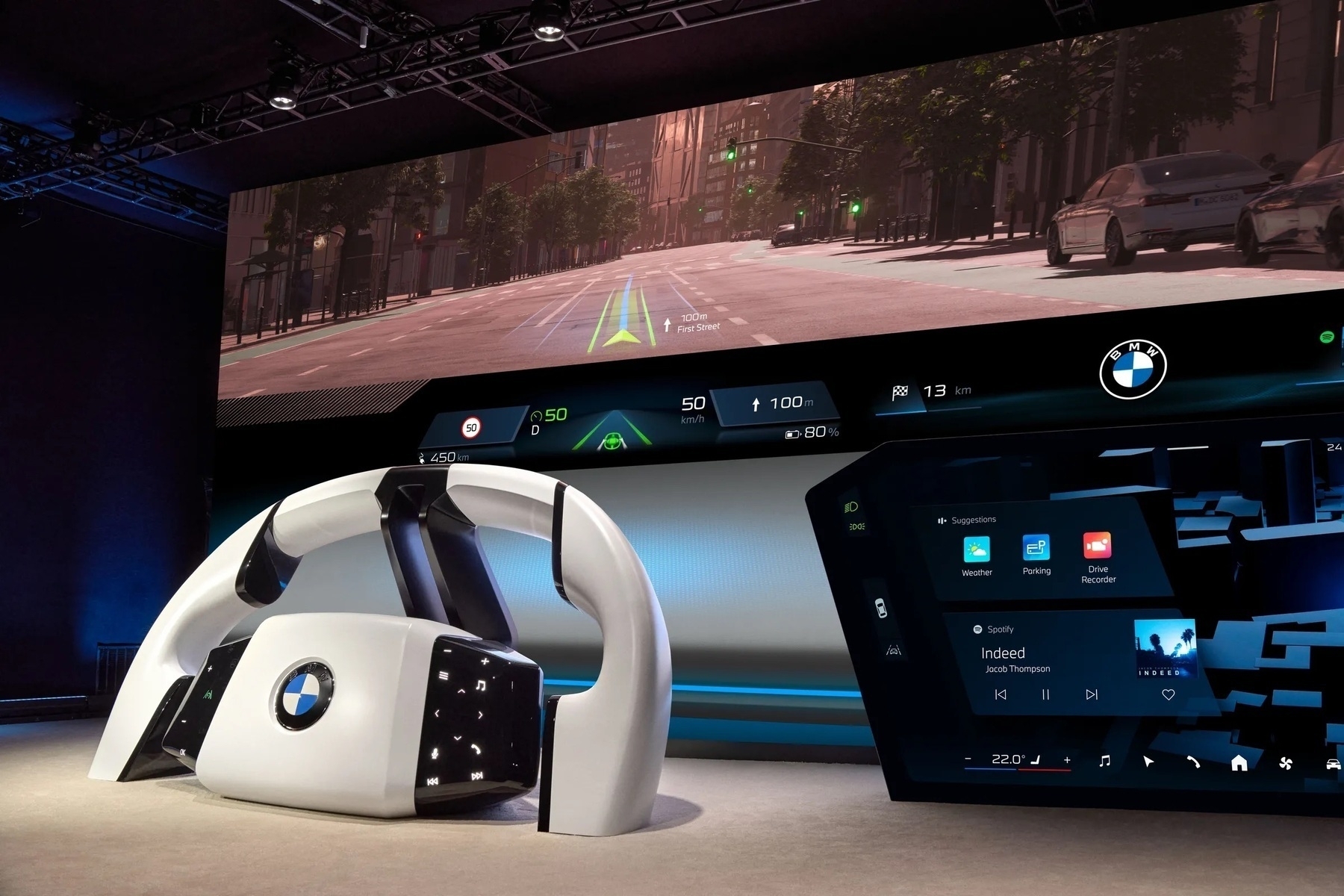 Image: BMW.
Image: BMW.
BMW, known for its luxury “ultimate driving machines,” announced an all-new version of its iDrive infotainment system centered around an augmented reality-powered heads-up display. Eliminating the typical instrument cluster, the company opted to project important driving information on the windshield itself, communicating directions and controls via an AR projection on the road. The typical infotainment screens still remain below the windshield, accessible for all passengers, but driver-specific information is now overlaid atop the road to limit distractions.
The new system is scheduled to appear in a sport utility vehicle later this year built on BMW’s Neue Classe architecture, which the company first announced at CES 2023. But the choice to digitize previously analog controls in a vehicle beloved by many for being tactile and sporty is certainly a bold design move — and I’m not sure I like it. The dashboard now looks too empty for my liking, missing the buttons and dials expected on a high-end vehicle. Truthfully, it looks like a Tesla, built with less luxurious materials and with no design taste. As Luke Miani, an Apple YouTuber, put it on the social media website X, “Screens kill luxury.”
I also think that while the AR directions are handy, the overall experience is more irritating and distracting than typical gauges. The speedometer should always be slightly below the windshield so that it is viewable in the periphery without occupying too much space in a driver’s field of view. The new system looks claustrophobic, almost like it has too much going on in too little space. I’ll be interested to see how it looks in a real vehicle later in the year, but for now, count me out.
Delta’s New Inflight Entertainment Screens
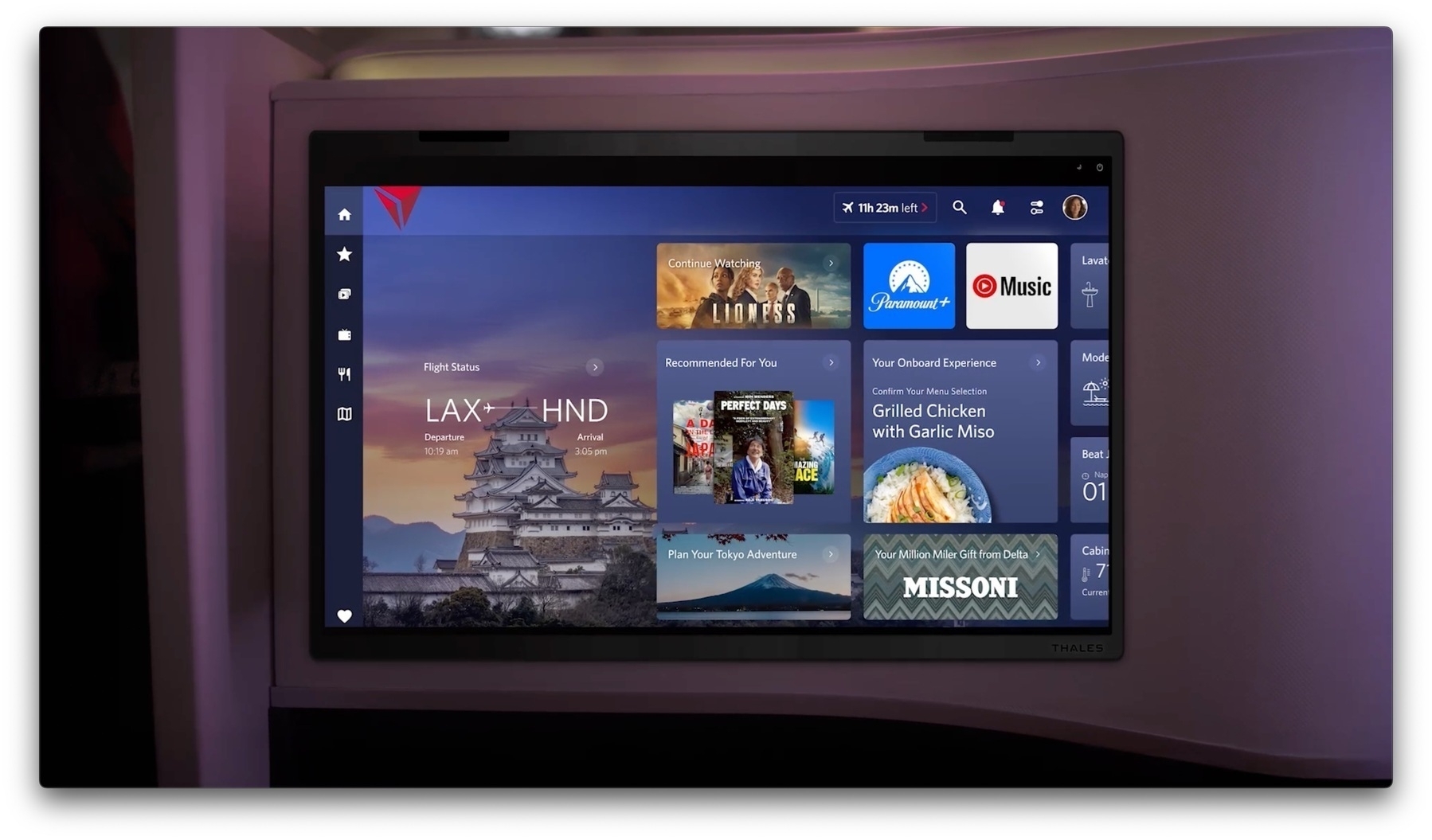 Image: Delta Air Lines.
Image: Delta Air Lines.
Delta Air Lines, at a flashy press conference at the Las Vegas Sphere Tuesday evening, announced updates to its seat-back entertainment and personalization at its 100th anniversary keynote. The company said that it would begin retrofitting existing planes with new 4K high-dynamic-range displays and a new operating system, bringing a “cloud-based in-flight entertainment system” to fliers.
Delta also announced a partnership with YouTube, bringing ad-free viewing to all SkyMiles members aboard. The company announced no other details, but it’s expected that the inflight system will include the YouTube app in retrofitted planes. The new system also supports Bluetooth, has an “advanced recommendation engine,” and allows users to enable Do Not Disturb to notify flight attendants not to disturb them.
Delta said the new planes would begin arriving later this year but had no word on updates to WI-Fi, including Starlink, which its competitor United Airlines announced late last year would be coming to its entire fleet in a few years. I still believe Starlink internet is more important than any updates to seat-back entertainment screens, as most people usually opt for viewing their own content on personal devices.
Anker’s Solar Umbrella
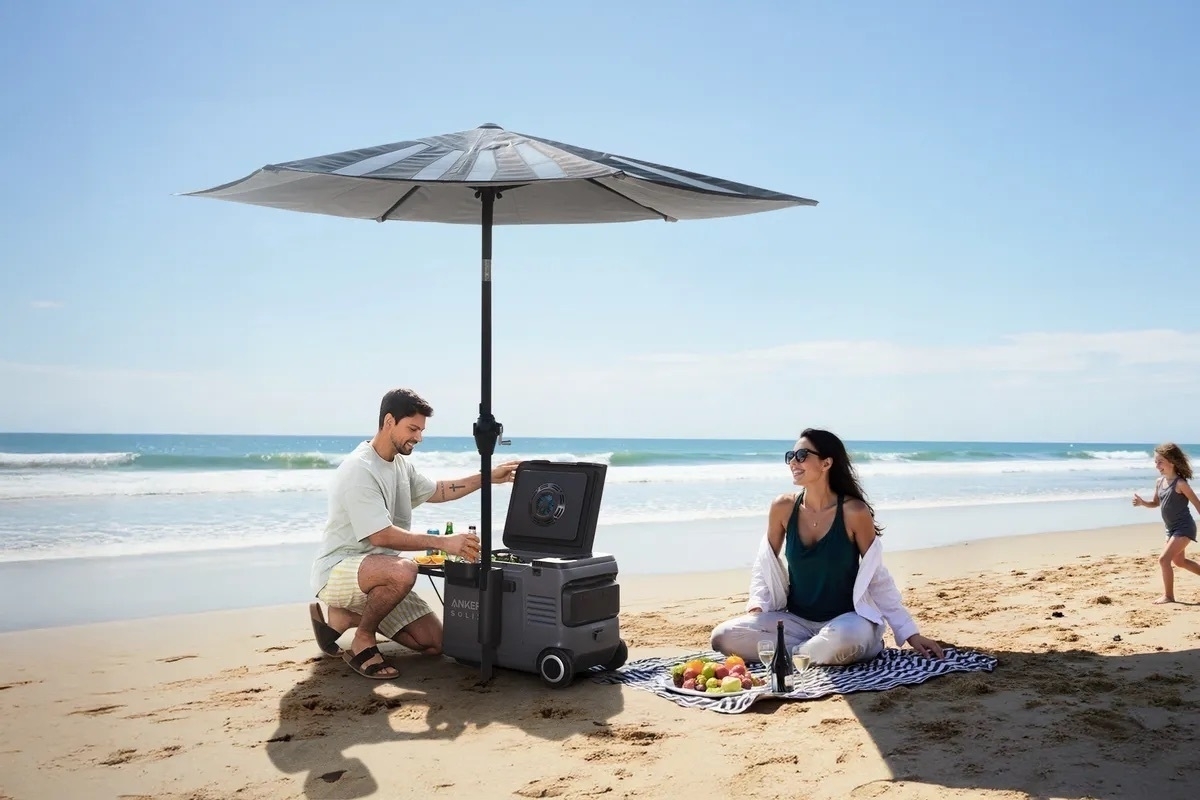 Image: Anker.
Image: Anker.
Anker announced and showcased on the show floor this week an umbrella made of solar panels for the beach. The umbrella, called the Solix Solar Beach Umbrella, has a new type of perovskite solar cells that are up to double as efficient as the standard silicon-based cells found in most modern solar panels, according to Anker. Perovskite cells can be optimized to absorb more blue light, which explains how Anker is achieving unprecedented efficiency.
The Solix Solar Beach Umbrella connects to the company’s EverFrost 2 Electric Cooler, which also comes equipped with outlets to charge other devices using the solar power generated by the umbrella. The umbrella charges the cooler’s two 288-watt-hour batteries at 100 watts, which can then power devices at up to 60 watts through the USB-C ports. Anker plans to ship the cooler in February and the umbrella in the summer, with the former starting at $700 and the latter’s price yet to be determined.
I’ve never seen a perovskite solar panel before, so the umbrella caught my eye for its efficiency. Typically, solar-powered outdoor gear isn’t worthwhile because it doesn’t generate as much power as connected devices use — it’s more suited for long-term solutions like a home during the day when nobody is using power and the batteries can charge. But the perovskite cells change the equation and make Anker’s product much more compelling for long beach days or even camping trips since the umbrella can be used as practically a miniature solar farm to power the company’s batteries, even in low-light conditions.
LG UltraFine 6K
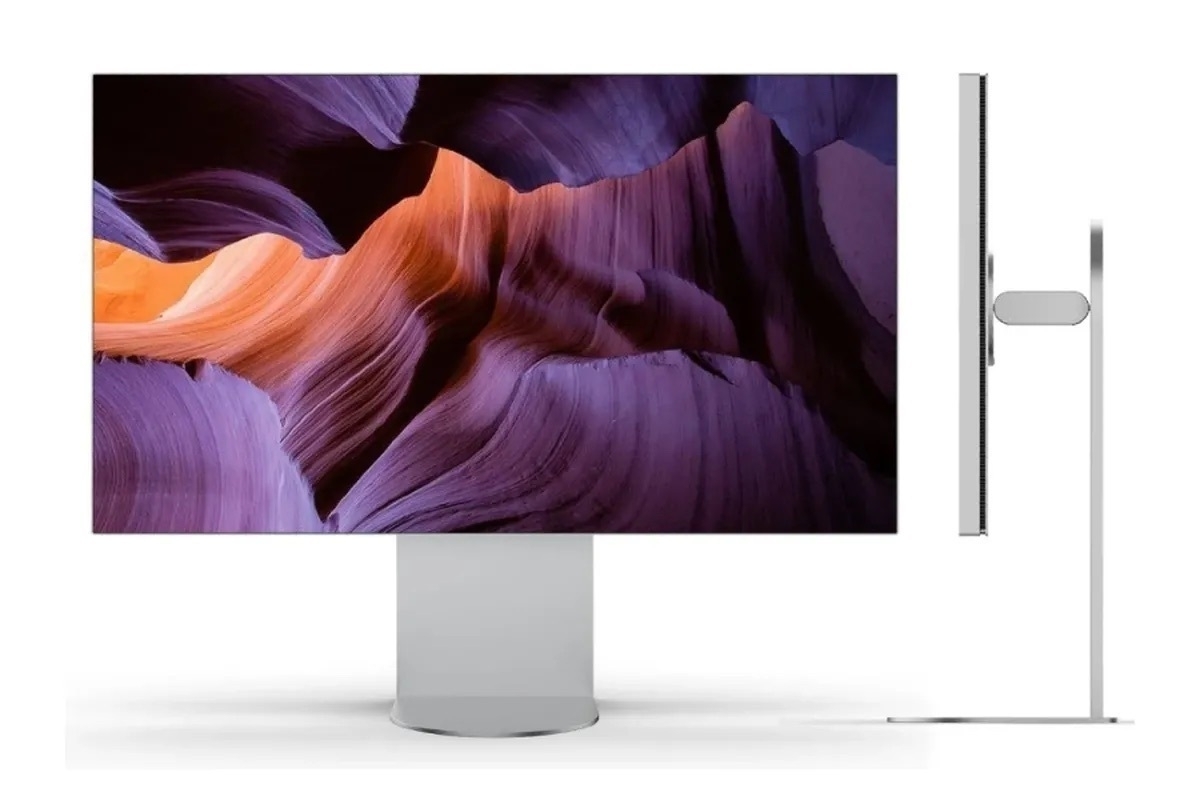 Image: LG.
Image: LG.
LG announced over the weekend and showcased on the show floor a 6K-resolution, 32-inch monitor to compete with Apple’s Pro Display XDR. The product ought to have tight integration with macOS, similar to LG’s other UltraFine displays, which are even sold at Apple Stores alongside the Studio Display. Due to its resolution, the monitor has a perfect Retina pixel density, just like Apple’s first-party options, making it an appealing display for Mac designers and programmers.
The display is an LCD, however, and is the first to use Thunderbolt 5, which Apple’s latest MacBooks Pro with the M4 series of processors support. I assume the LCD display — which is bound to be color-accurate, like LG’s other displays — will drastically lower the cost, making it around $2,500, similar to Dell’s uglier but similarly specced offering. LG offered no other specifications, including a release date.
I assume this monitor will be a hit since it would be the third 6K, 32-inch monitor on the market — perfect for Mac customers who want perfect Retina scaling. The Pro Display XDR isn’t expected to be refreshed anytime soon, and some people want a larger-than-27-inch option, leaving only Dell’s the only option, which is less than optimal due to its design and lack of macOS integration. LG’s UltraFine displays, by comparison, turn on the moment a Mac laptop is connected or a key is pressed, just like an Apple-made display. LG’s latest monitor also looks eerily similar to the Pro Display XDR, leading me to believe it’s intended for the Mac. This is one of the most personally exciting announcements of CES this year.
Sony Honda Mobility’s Afeela
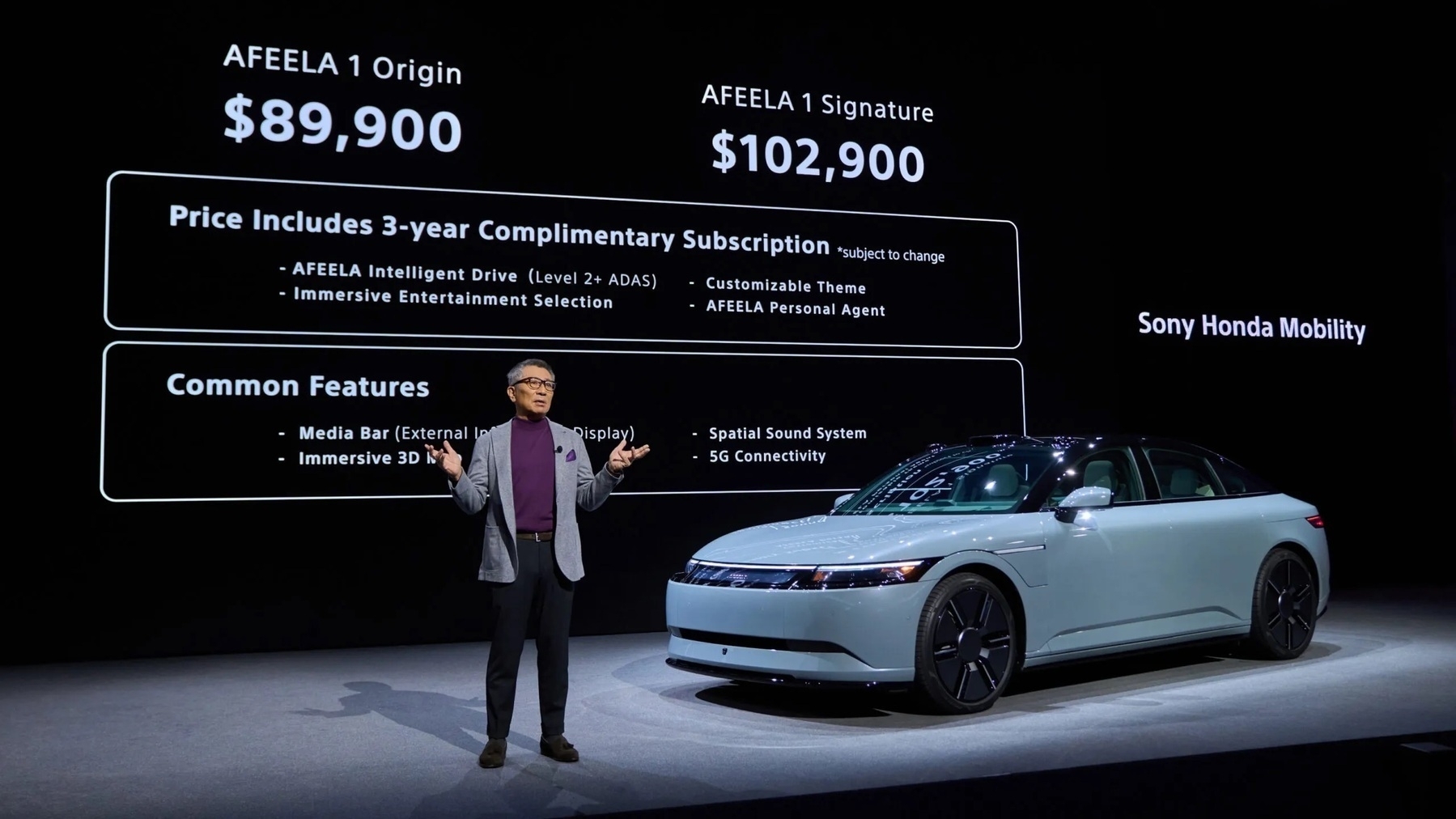 Image: Sony Honda Mobility.
Image: Sony Honda Mobility.
Sony first announced the Afeela electric vehicle in collaboration with Honda at CES 2023 but offered no details on pricing, availability, or specifications for two years while teasing the car’s supposed self-driving functionality and infotainment system. Now, that has changed: the venture announced final pricing for two trims as well as availability for the first units.
On Tuesday, Sony made the Afeela 1 available for reservation. The regular trim is $90,000, and the premium one is $103,000, with three years of self-driving functionality included in the price. (How generous.) Reservations are $200 and fully refundable, but interestingly, they are only limited to residents of California, which Sony says is because of the state’s “robust” EV market. The rest of the contiguous United States also has a robust EV market, and the vehicles are assembled in Ohio, which leads me to believe the limit is because Sony can’t produce enough vehicles for the whole country.
But I think that’s the least of the company’s problems. The $103,000 version is the first to ship, with availability scheduled for sometime in 2026; the more affordable $90,000 trim is scheduled for 2027. This realistically means early adopters will opt for the more expensive trim, which is truly very expensive. $100,000 can buy some amazing cars already on the market, and the Afeela has nothing to offer for the price. It is only rated for 300 miles of range, and the company provided no horsepower or acceleration numbers. It’s also unclear if the car has a Tesla charging port for use with the Supercharger network or if it’s stuck with a traditional combined charging system — commonly known as CCS — connector.
Sony provided no timeline for when the vehicle would come to the rest of the United States, which leads me to believe that the entire venture is a pump-and-dump scheme of sorts: sell under 100 vehicles only in California in 2026, cancel the 2027 version, and shut down the project by the end of the decade. That way, Sony and Honda both lose nothing, and nobody buys a car that doesn’t work. The entire deal seems incredibly unscrupulous to me, knowing the fact that the company is opening two “delivery hubs” in Fremont and Torrance, California, where interested customers will be able to take test drives. The whole thing seems like a proof of concept rather than a full-fledged vehicle.
If I were a betting man, I would say that the Afeela will never become a true competitor in the EV market — ever.
The CES show floor was certainly more exciting than the press conferences from Monday, but there’s still a lot to be uncovered. That’s not a bad thing, or even unexpected, but it’s something to be cautious of when following the news out of CES closely. I still stick to my opinion that this year’s show is one of the most boring in recent years, but that doesn’t mean everything was bad.